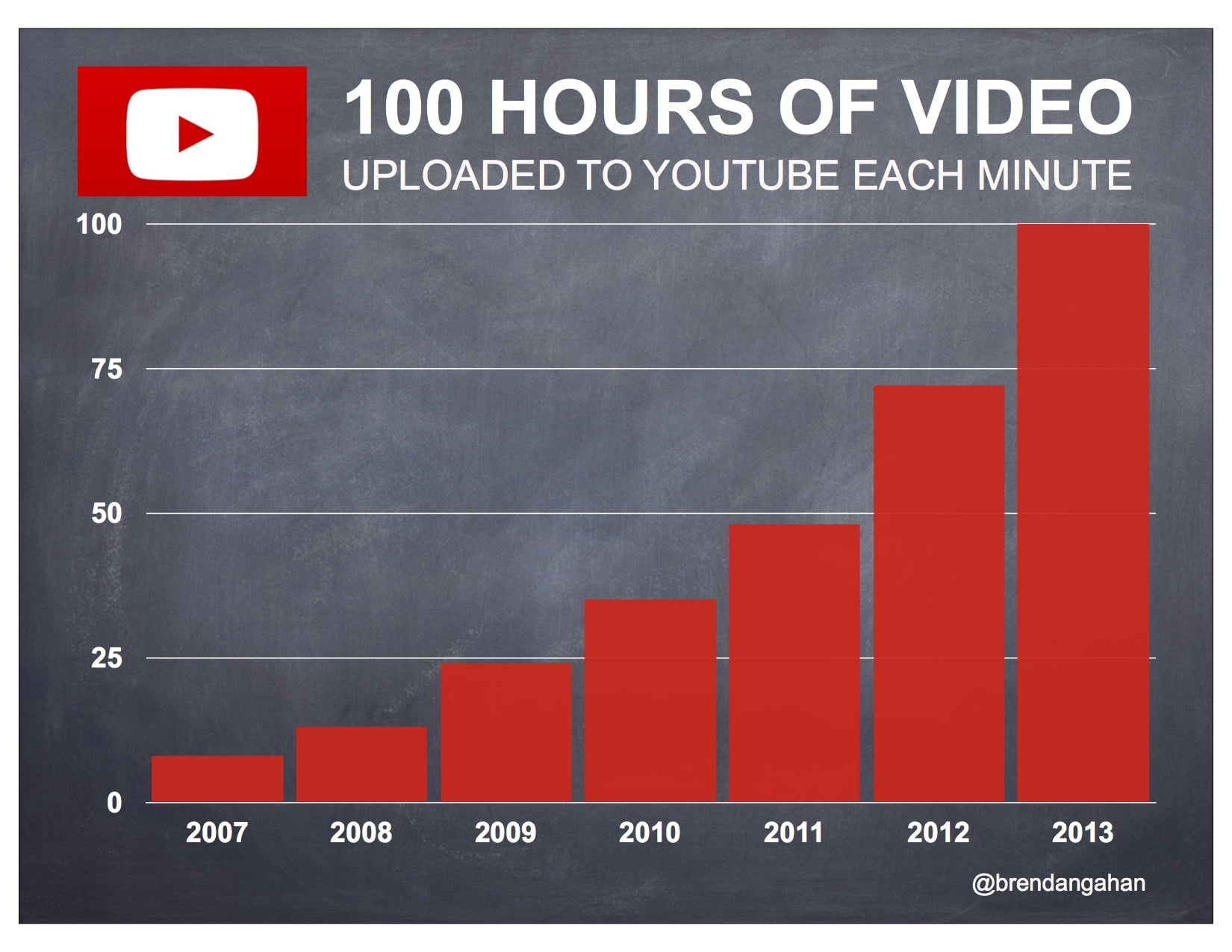In recent years, YouTube has transformed from a quirky video-sharing site into a colossal platform for entertainment, education, and marketing. As content creators flock to the platform to share their passions and skills, businesses have taken notice, resulting in a significant increase in YouTube commercials. This trend has implications for both viewers and creators, reshaping the way we consume content and interact with advertising. Let’s delve into the growth of
The Growth of YouTube as a Platform

YouTube's journey to becoming a digital powerhouse is nothing short of remarkable. Here are some key factors that contribute to its skyrocketing popularity:
- Diverse Content: With millions of videos covering a vast range of topics, from cooking tutorials to tech reviews, YouTube caters to all interests. This diversity attracts a massive audience, which is a goldmine for advertisers.
- Accessibility: YouTube can be accessed on various devices—smartphones, tablets, and smart TVs—making it convenient for viewers to watch anywhere, anytime.
- Creator Ecosystem: The platform supports a thriving creator community, allowing individuals to monetize their content. This has encouraged more creators to join, leading to an influx of new content every day.
- Personalized Recommendations: YouTube's advanced algorithms tailor content to individual preferences, ensuring that viewers remain engaged and are more likely to encounter relevant ads.
- Global Reach: YouTube isn’t limited by geography. Its international audience makes it an attractive option for brands looking to reach a global market.
In fact, according to statistics, YouTube has over 2 billion logged-in monthly users, making it one of the most visited sites globally. This impressive user base not only drives the creation of varied content but also appeals to brands seeking to effectively target their advertisements. As advertisers increasingly recognize the platform’s potential, the number of commercials has surged, revealing a complex interplay between user experience and commercial interests.
Understanding YouTube Advertising Trends

YouTube has become a dominant platform for advertising, and understanding the trends in YouTube advertising is crucial for both marketers and viewers. Over the past few years, the landscape of advertising on
Several key trends have emerged:
- Increased Investment: Many companies are allocating more of their marketing budgets to YouTube. With the platform's user base surpassing 2 billion monthly active users, advertisers are keen to capitalize on its vast reach.
- Short-Form Video Content: The trend towards shorter video ads, often 15 seconds or less, is growing. This format caters to the decreasing attention spans of viewers who prefer quick, digestible content.
- Engagement Measurement: Advertisers are focusing more on metrics like view rates, click-through rates, and engagement metrics to adjust their strategies in real time. They want to understand how viewers are interacting with ads.
- Influencer Collaborations: More brands are teaming up with YouTube influencers to leverage their followers. This approach not only promotes products but also enhances authenticity and trust among potential customers.
In essence, understanding these trends can help marketers innovate their strategies to stand out on a crowded platform, while viewers become increasingly aware of the frequency and types of commercials they encounter.
Reasons Behind the Surge in Commercials
The surge in YouTube commercials can be attributed to a variety of factors that reflect changing consumer behaviors and advancements in technology. As digital marketing continues to grow, several compelling reasons highlight why brands are investing heavily in YouTube advertising.
Some prominent reasons include:
- Shift to Digital: The traditional advertising mediums such as TV and print are declining in effectiveness. More businesses are recognizing that their target audience spends significant time online, specifically on platforms like YouTube.
- Cost-Effectiveness: YouTube offers various pricing models, making it accessible for businesses of all sizes. Ads can be targeted to specific demographics, ensuring that marketers get the best return on their investment.
- Global Reach: With billions of users worldwide, YouTube allows brands to reach an audience that transcends geographic boundaries. Whether a small local business or a massive multinational corporation, advertisers can effectively target users in different regions.
- Advanced Targeting Options: YouTube’s sophisticated data analytics enable advertisers to fine-tune their ad targeting based on user behavior, interests, location, and other key demographics. This precision helps maximize the effectiveness of campaigns.
- Rise of E-commerce: As online shopping continues to expand, brands are using YouTube to promote their products and drive traffic to their e-commerce sites more than ever before.
The blend of these factors not only explains the rising quantity of commercials on YouTube but also emphasizes the platform's importance in modern marketing strategies.
The Impact on Content Creators
The surge in YouTube commercials has been a double-edged sword for content creators. On one side, these ads bring in a significant revenue stream, making it possible for many creators to earn a living from their content. However, as the number of commercials increases, the relationship between creators and their audience becomes more complex.
Many content creators depend on ad revenue for financial support. With YouTube's Partner Program, they can monetize their videos, which is a major incentive to produce high-quality content. However, with frequent commercial interruptions, some creators face a conflict. They want to deliver engaging content, but longer ads can deter viewers, leading to potential decreases in audience retention and engagement.
Here are some key implications for content creators:
- Increased Revenue: Ads can lead to higher earnings, especially for popular channels with large viewership.
- Viewer Attrition: More commercials might lead to viewer frustration, resulting in lost subscribers if audiences feel overwhelmed.
- Content Strategy Shift: Creators might alter their content to be more ad-friendly, impacting their unique voice and style.
- Viewer Engagement: Some creators are experimenting with integrating ads naturally into their content, trying to maintain viewer interest.
So, while creators can enjoy the financial benefits, they must also navigate the tricky balance of maintaining audience trust and interest in an increasingly commercialized platform.
Viewer Experience and Reactions
The viewer experience on YouTube has shifted dramatically with the rise of commercials. What was once a haven for uninterrupted content consumption has transformed into a landscape that often forces users to endure numerous ads. This transition brings up interesting reactions and feelings from the audience.
Many viewers have expressed their frustration with the increasing frequency and length of commercials. A common sentiment is that ads often disrupt the flow of entertainment, leading to a less enjoyable viewing experience.
Here’s how viewers typically react to these changes:
- Frustration: Many users vocalize their annoyance in comment sections and social media platforms. A heavy ad load can prompt complaints about the monetization strategy of YouTube.
- Ad-blocking Tools: Some viewers have turned to ad-blocking software to combat the influx of commercials, which is a direct response to the feeling that ads are too intrusive.
- Subscription Services: Platforms like YouTube Premium are gaining traction as viewers look for ways to enjoy content without interruptions.
- Selective Viewing: Audiences may choose to watch only certain creators or types of content based on the perceived ad burden they carry.
Ultimately, the increase in commercials has definitely altered viewer experience. As audiences navigate their feelings about ads, it’s clear that YouTube will need to continue finding a balance between monetization and user satisfaction.
7. Future of Advertising on YouTube
As YouTube continues to evolve, so does the landscape of advertising on the platform. With a staggering number of users—over 2 billion each month— YouTube is becoming an increasingly appealing space for advertisers to reach their target audience. So, what does the future hold for advertising on YouTube?
For starters, personalized ads are on the rise. Advertisers are leveraging the power of algorithms to deliver content tailored to individual user behaviors and preferences. This means you're likely to see ads that resonate with your interests, making them more engaging and effective.
Another fascinating trend is the growth of interactive advertisements. These have the potential to lure viewers in by allowing them to engage directly with the ad content. For example:
- Polls and Quizzes: Brands may include interactive elements that encourage viewers to participate and provide feedback.
- Shoppable Ads: Users can click directly on products within an ad to learn more or make a purchase. This enhances the consumer journey and can drive sales significantly.
In addition, short-form video ads are gaining popularity as consumer attention spans dwindle. Content creators and brands will likely focus on crafting snappy, impactful ads that convey messages quickly. Think of platforms like TikTok influencing YouTube's approach to advertising!
Finally, as sustainable practices gain traction, more brands will look to advertise their eco-friendly products. As they do, YouTube will likely provide tools to showcase these initiatives, appealing to the environmentally-conscious viewer.
8. Conclusion
In conclusion, the increase in YouTube commercials has reshaped the way advertisers approach their campaigns. With the platform continuously growing, this shift has transformed both user experiences and brand strategies. Advertisers must navigate a landscape that demands creativity and adaptability to capture the attention of their audiences effectively.
The integration of technology into advertising on YouTube presents both opportunities and challenges. On one hand, personalized and interactive ads can significantly enhance viewer engagement. On the other hand, the ever-increasing number of commercials can lead to ad fatigue among users.
As content creators strive to produce authentic and relatable material, they must also balance monetization efforts with maintaining their connection to the audience. This balancing act is crucial and will influence how advertising evolves on the platform.
Ultimately, if both brands and creators are willing to innovate while mindful of user experience, the future of advertising on YouTube could be incredibly bright. As viewers grow more accustomed to a world filled with ads, understanding their wants and needs will be paramount for advertisers aiming to thrive in this dynamic ecosystem.










